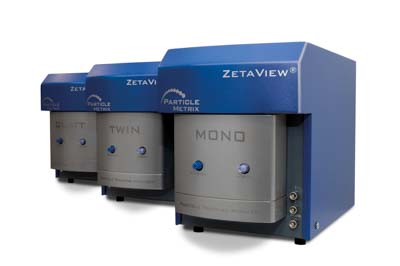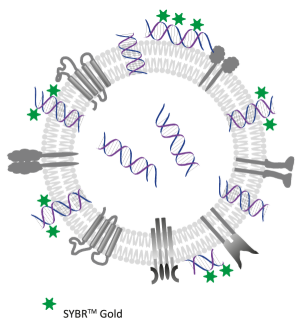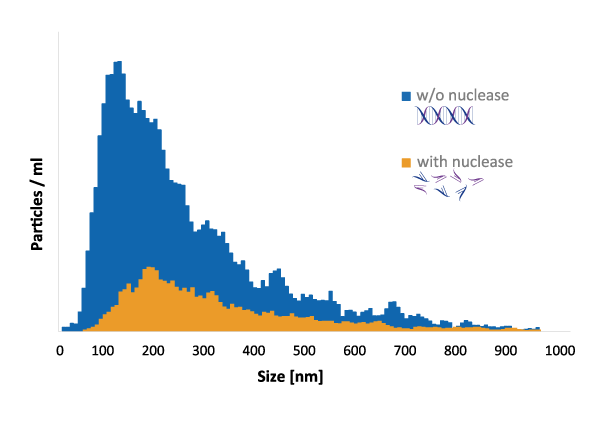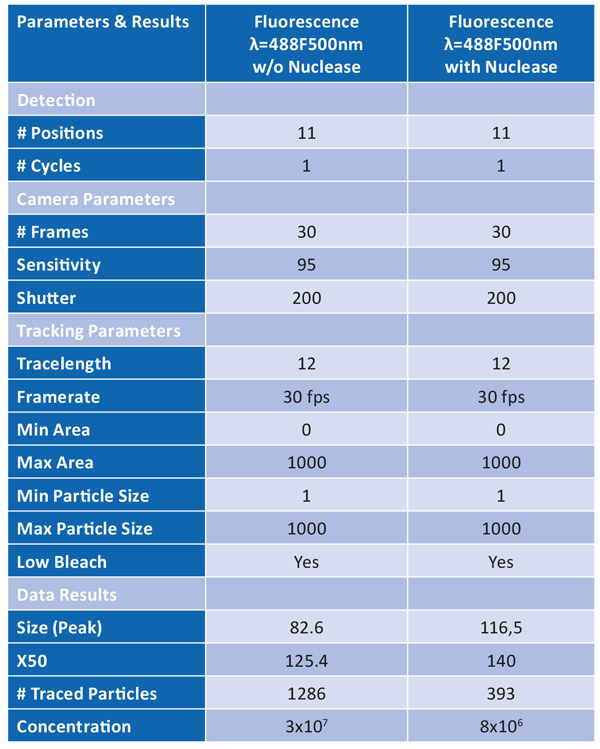+49 (0)8143-99172-0
Headquarter
+49 (0)8143-99172-22
Support


0x consumables
5x faster switching
10x faster cleaning
12x fluorescence channels
∞x statistics
…and much more!

We measure your products in a measuring range of 0.8 nm to 300 μm, if possible in original concentration
While the characterization of extracellular vesicles (EVs) was mainly focused on proteins and lipids in the past [1-2], it is apparent that interest in the study of nucleic acid cargo in EVs is now increasing. The use of fluorescence nanoparticle tracking analysis (F-NTA) enables the detection of membrane-associated nucleic acids from EVs.
Keywords: nucleic acid cargo, EVs, F-NTA, fluorescence nanoparticle tracking analysis

These experiments used the nucleic acid dye SYBR™ Gold (#S11494, Thermo Fisher Scientific), which has shown a sensitivity of >10x more than ethidium bromide, for the detection of DNA and RNA in denaturing urea, glyoxal and formaldehyde gel [3].
The specificity of the experiment was achieved by a nuclease control aimed at specifically degrading EV-associated nucleic acids after labeling them. However, the use of Benzonase (#70746-3, Novagen) did not allow differentiation between DNA and RNA degradation in this experiment.


The reduction of the fluorescent signal after incubation with Benzonase shows that SYBR™ Gold can be used as a specific stain for nucleic acid detection by F-NTA.
It can be assumed that the SYBR™-Gold signal remaining after nuclease treatment is due to nucleic acids in the EV lumen that cannot be degraded.
Therefore, SYBR™-Gold-activated nucleic acid detection can be used for selective measurement of membrane-associated nucleic acids due to the nuclease treatment.
1. Lötvall et al.:
Minimal experimental requirements for definition of extracellular vesicles and their functions: a position statement from the International Society for Extracellular Vesicles
J Extracell Vesicles 2014; Dec 22:3:26913
2. Théry et al.:
Minimal information for studies of extracellular vesicles 2018 (MISEV2018): a position statement of the International Society for Extracellular Vesicles and update of the MISEV2014 guidelines
J Extracell Vesicles 2018; Nov 23;7(1):1535750
3. Truma et al.:
Characterization of SYBR Gold nucleic acid gel stain: a dye optimized for use with 300-nm ultraviolet transilluminators
Anal Biochem 1999; Mar 15;268(2):278-88
Disclaimer: While we have taken every care to ensure that the information in this document is correct, nothing herein should be construed as implying any representation or warranty as to its accuracy, correctness or completeness of this information and we shall not be held liable for any errors therein or for any damages in connection with the use of this material. Particle Metrix reserves the right to change the content of this material at any time without notice.
Copyright: © May 2024 Particle Metrix. This publication or parts thereof may not be copied or distributed without our express written permission..
Headquarter
Support
Opt-out complete; your visits to this website will not be recorded by the Web Analytics tool. Note that if you clear your cookies, delete the opt-out cookie, or if you change computers or Web browsers, you will need to perform the opt-out procedure again.
You may choose to prevent this website from aggregating and analyzing the actions you take here. Doing so will protect your privacy, but will also prevent the owner from learning from your actions and creating a better experience for you and other users.
The tracking opt-out feature requires cookies to be enabled.